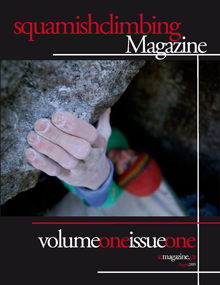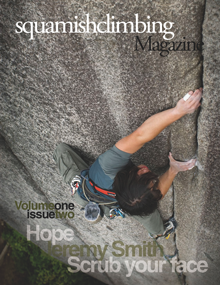Josie Hetyei is an incredibly inspiring climber. She has redpointed multiple 5.14s including one 5.14b. Even more impressive is how she continues to improve and even have breakthroughs at the age of 38 and after 20 years of climbing. She approaches her climbing with an incredible amount of persistence and diligence and she works really hard to accomplish her goals. For our final interview of 2105, Squamish Climbing Magazine caught up with Josie and she had this to say:
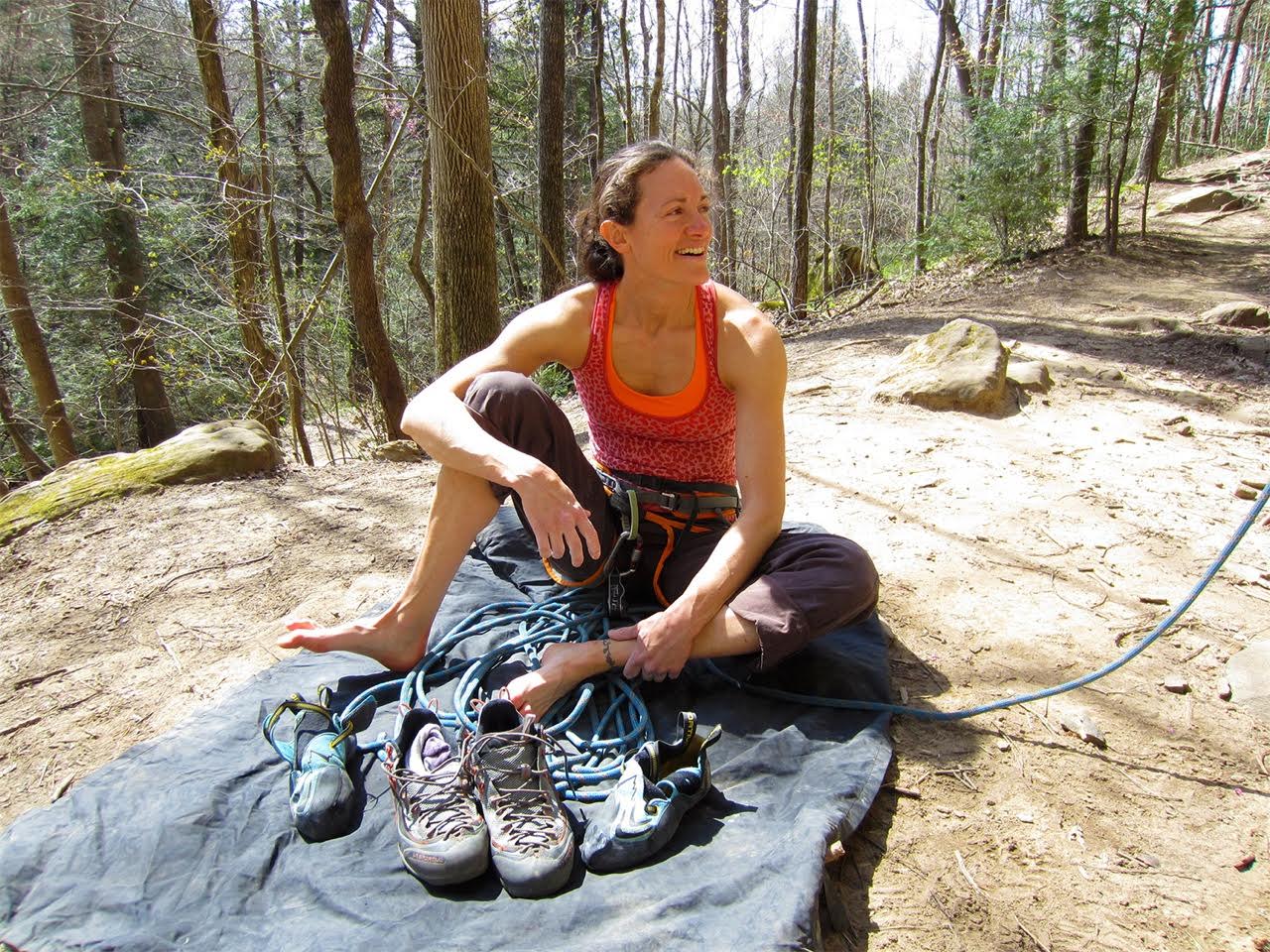
Josie Hetyei. Photo Dan Beland©
Thanks for taking the time to chat with us Josie. How are things going?
Very well thanks. I am back to work after an 8 month leave for family reasons. I spent a lot of this time doing what I love most in life, climbing in Europe and the United States with my fiancee.
How long have you been climbing? Can you tell us about how you started and how your approach to climbing has evolved over the years?
I’ve been climbing for twenty years. When I started climbing I was also competing a lot in triathlons and was mountaineering, ski touring, ice climbing, and gear climbing. I became a jack of all trades and master of none. For me, to sport climb at my maximum level, which is my favourite activity, I need to focus on this entirely which means limiting all the other activities and while I’m projecting doing just that…. not also getting wasted from two hour runs and weight room sessions.
What are some of your most notable achievements along the way? not necessarily the hardest routes at the time but the most meaningful or significant
My most memorable achievements were my first 13a, Air Test, Skaha, B.C. in 2001 which coincided with my first wedding date. Secondly, it was very meaningful to climb my first 13c, Globetrotters, at Horne Lake, B.C. in 2011 after having abandoned this project seven years prior due to a significant elbow tendon tear. Climbing my first 14a, Motivation and Dinosaur Highway, Horne Lake, B.C. shortly after in 2013 was a lifelong dream realized. Throughout my climbing career there have been other meaningful redpoints on routes that were not graded as hard but were my anti-style or took me the most number of tries. I can remember redpointing Animal Dreams, 12d in Skaha, B.C. after 77 attempts. I also fondly remember Predator, 13b in Rumney, New Hampshire, for its dyno!
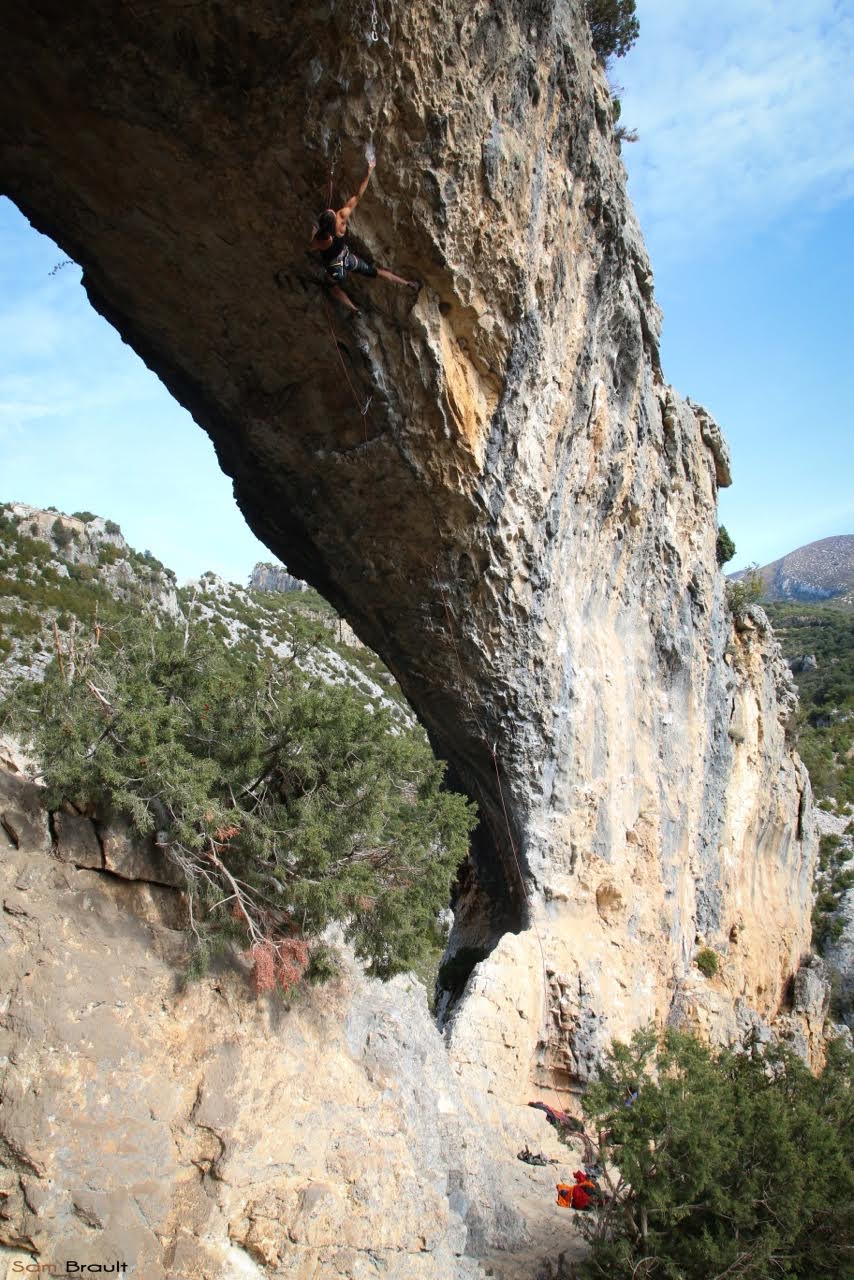
Josie on El Delfin (7c+), Rodeller Spain. Photo Sam Brault©
2013 was a breakthrough year for you. You went from having done a handful of routes graded 5.13c’s to climbing three 5.14a’s. A sudden progression like this is rare, especially for someone who has been climbing as long as you have. To what do you attribute this jump in ability?
To be honest, limestone was the answer for me. I spent time trying several hard 5.13’s in Squamish, B.C. and would often get shut down by difficult boulder problems and super fingery cruxes which would leave me injured. I really enjoy very steep climbs because they engage the whole body more and generally have bigger holds. Also, I decided to try 5.14 because I saw several local Horne Lake climbers who would progressively try harder routes there and send them. Thanks to Rene Monjo, who spent a lot of time equipping routes at Horne Lake, and encouraging me to try the harder routes there and assisting with beta.
In 2014 you redpointed ADATO, your first 14b. Can you tell us a bit about this ascent and what it meant to you?
This ascent is the most meaningful to date for several reasons. Firstly, I redpointed the route with the love of my life belaying me. Second, it is the best sport route I’ve been on because of the amazing, intricate full-body movement, and the mediocre rests that still have some part of the body pumping out. Also, I suffered numerous battle wounds from a crucial shin digging knee bar which I needed to make the crux, after having stitches in that exact spot from a rockfall accident hiking up to the cliff weeks prior.
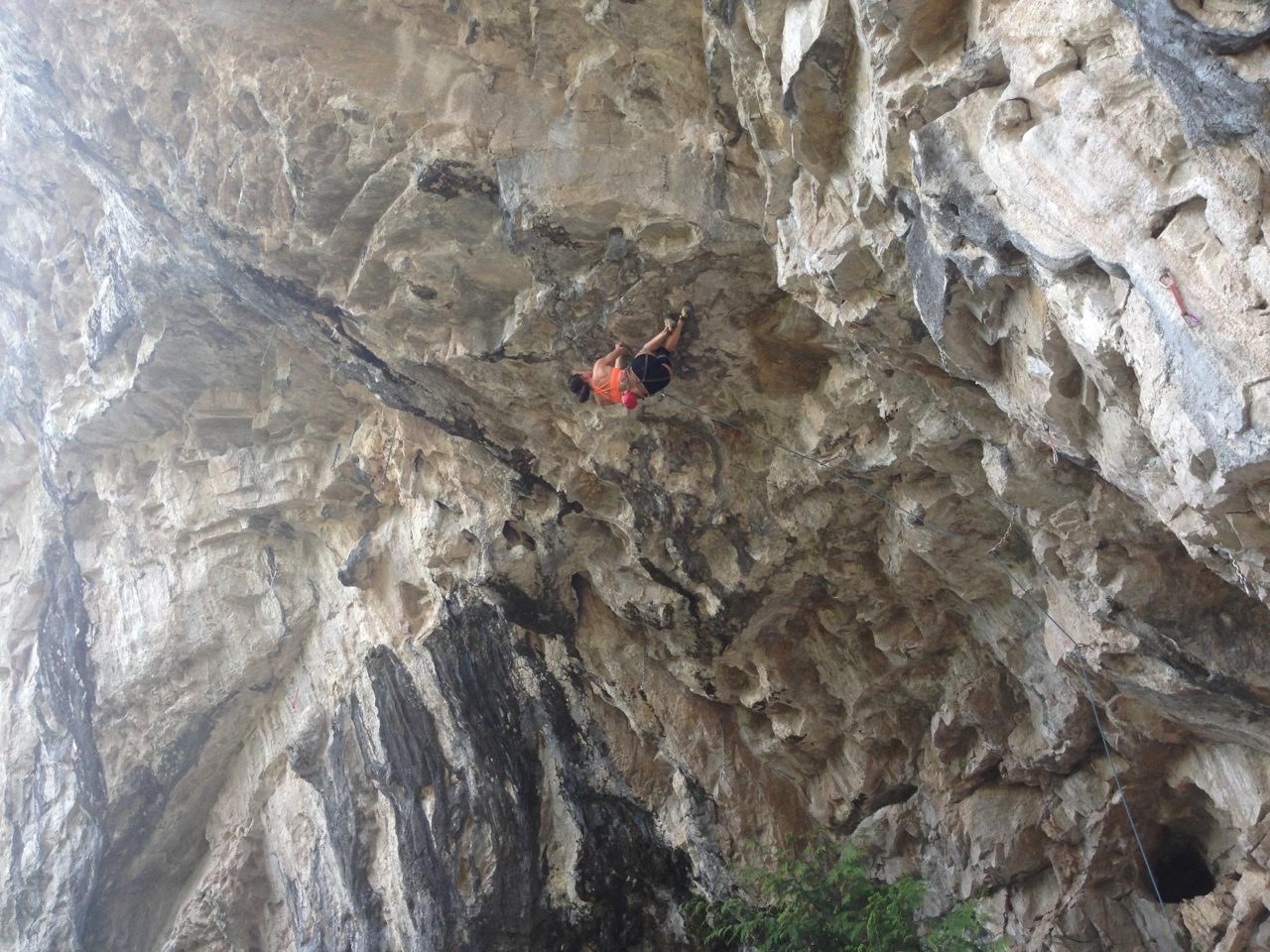
ADATO (5.14b), Horne Lake. Photo Kyle Williams©
This year you climbed two routes grades 5.14a while travelling in Europe. How was the experience of projecting routes at this level on the road different from trying them at home? How did you choose your projects?
It was important to have time off work so I could focus on this goal while in Europe. On my first trip to Rodellar, Spain in 2013, I knew I could accomplish climbing 5.14 there because the style suited me. I could find mega-endurance climbs with stacked moderate boulder problems with mediocre rests, and technical knee bars , which would bring the boulder grade down to V7 max. I picked a few 5.14 projects based on some research of which ones would suite me and spent a couple trips trying them in 2015. In the end both 14a’s I did took me 3 weeks of work, but I went willing to spend all my time on one project, which is a different approach from most climbers who are road tripping.
You’re known for your persistence. It is no secret that you sometimes log huge numbers of attempts on climbs. Do you ever have to work to stay motivated? Do you have doubts along the way and if so how do you stay positive?
Sport climbing is my greatest passion in life so I never have a problem staying motivated. I love being on the rock and could try a route forever, as long as I experience even minuscule progression. Some may get bored doing the same moves of a project over and over again, but I have the mental persistence and if I like the route, no problem doing it. I think I’ve tried Ultra Perm, RRG, more than 80 times.
Can you describe your typical redpoint process? How much time do you spend working the moves? at what point do you start giving the route redpoint burns?
These days, if I am on a project at my limit, I break it up into parts. Meaning I just try to do all the moves on the first 1/3 of the route on the first day, and so on. Sometimes, it takes me several days to get to the top of the route. I also use a stick clip to figure out moves between bolts if I can’t do them all in a row. Once all the moves have been accomplished, which can take several weeks, then I feel that I will be able to red point the route with enough work. I will spend time linking just two bolts and then progress to eventually two hangs, then one hang, then redpointing. Usually my redpoint burn feels like 5.8 because I have every move wired and found the best and easiest way to do it.
Are there any routes you have put considerable effort into but have not been able to complete?
I have put a lot of time into Ultra Perm, 13d at RRG but haven’t completed it yet. I dealt with a lot of bad conditions while trying it: too cold, too hot, too humid. For me to redpoint something at my limit, I need the conditions to be perfect. Perhaps I will try again on another trip.
You are one of only three Canadian woman to have climbed 14b. Even internationally, this is considered a very high standard. Most other climbers at this level have more sponsorship and are more well known than you are. Why have you not sought out more sponsors? Do you make a point of staying under the radar?
I would like to get more sponsors and am looking into this. I think I just do my thing and am modest about my abilities. No climbs come easy to me. I spend a lot of time trying them.
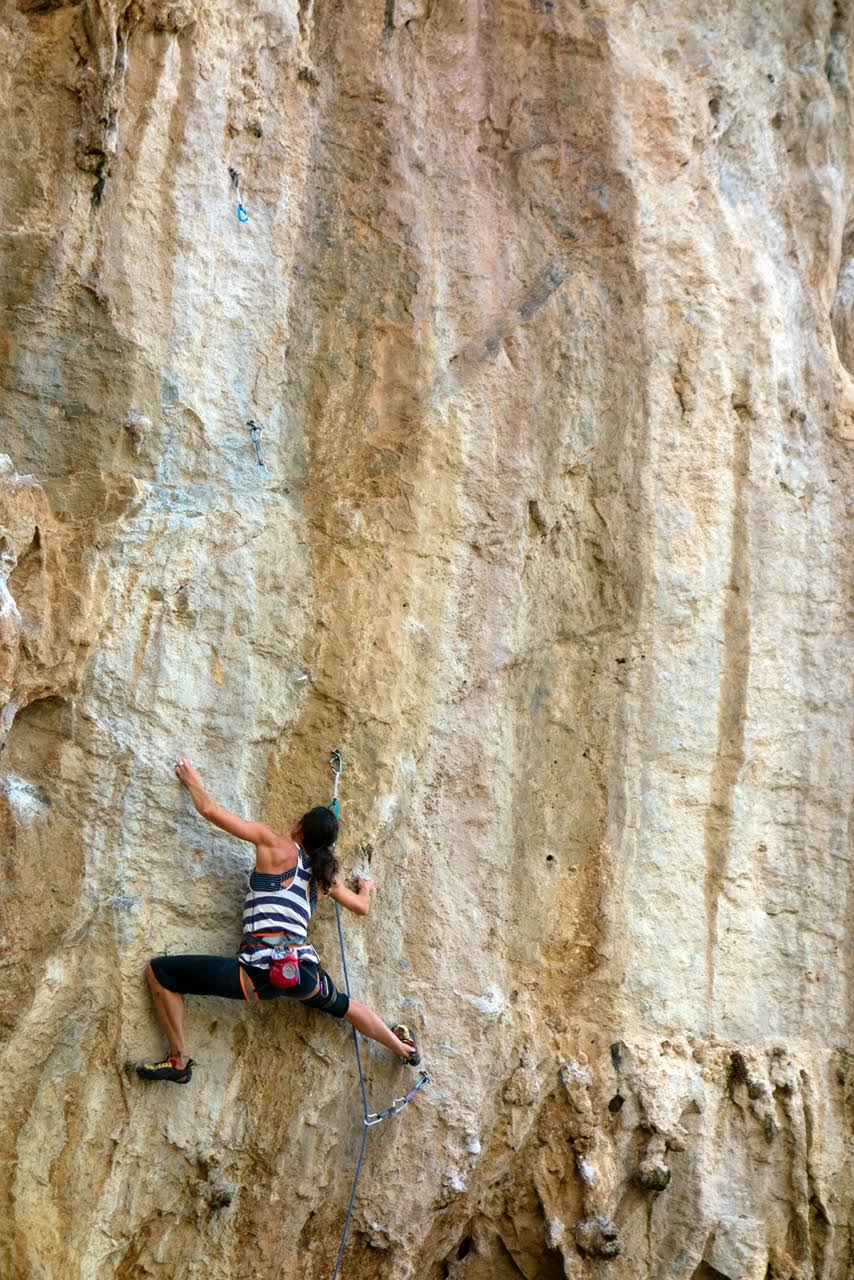
Racomelo (5.13d) Kalymnos, Greece. Photo Marc Bourdon©
Can you describe your training? When you aren’t climbing outside what does a typical week consist of in terms of training?
Usually I spend December through April bouldering indoors and May through November I am projecting outside, either locally or away on a climbing trip. During my indoor climbing season, I usually boulder and do upper body weights/core or yoga on the same day, and then I run or do some sort of cardio with leg exercises on the alternate days. I generally have one rest day per week.
You are a kneebar master. You seem to be able to find and use kneebars in positions where no one else can. To what do you attribute this skill? Do you have any advice for climbers trying to improve their own use of this technique?
I have flexible ankle, knee and hip joints, which helps and really good knee pads (Rock and Resole). Often my knee bars are just scums which help me with the movement and sometimes I use just foot smears for the knee bar which is calf intensive. There is a lot of learned core movement in the release of the knee bars which is often the crux of using them as is the ability to trust that they will not slip out. I think most climbers can use them. I would suggest spending the time to figure out how to put them in if they can assist with a difficult move.
You work full time as a police officer can you tell us a bit about how you decided on this career and how it fits in with your lifestyle?
I decided on this career after doing a few ride-alongs and enjoying the work. I have a great work schedule with 4 days on and 4 days off plus plenty of vacation time so I can get away to climb a lot.
What are your other interests outside of climbing?
I love yoga, trail running and most other physical activities. I guess I am an exercise junkie.
What’s next? Do you have any projects on the go or ones you plan to start? Big trips planned? Any other goals you can share?
My ultimate lifelong goal is to climb a 14d. I have my eye on a few more 14a’s in Rodellar, Spain for 2016 and also the goal to find a way to climb more.
Would you like to thank any sponsors or anyone else for that matter?
Right now I don’t have any sponsors. I would definitely like to thank my fiancee JF, and Maria, Mike and Kyle for their patience in giving me long belays on my projects over the last few years. Also, I would like to thank all those climbers over the years who have helped me with beta, as well as the support from my family, which has ultimately lead to my success on routes.
Thanks again Josie. Best of luck with your future projects!











